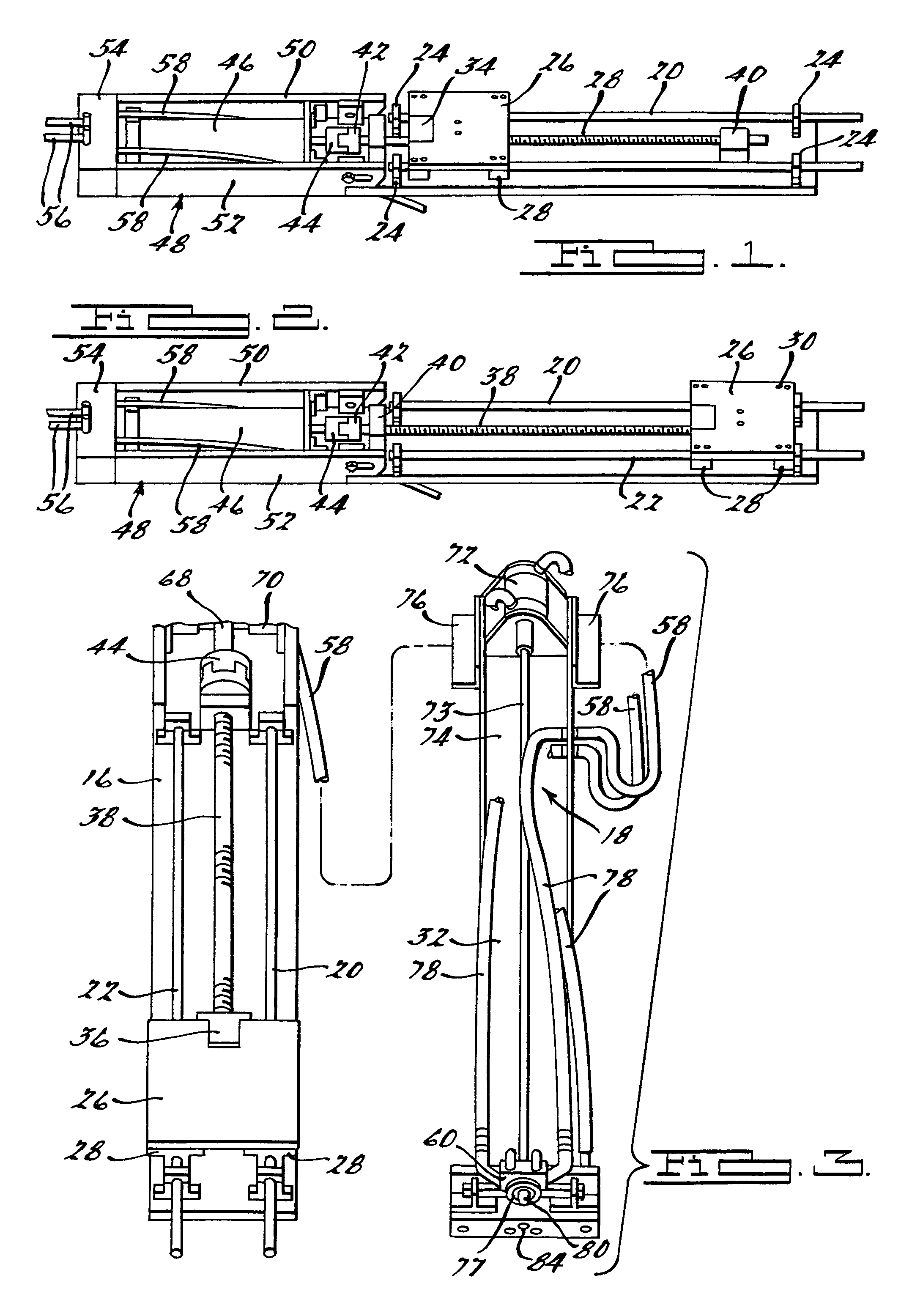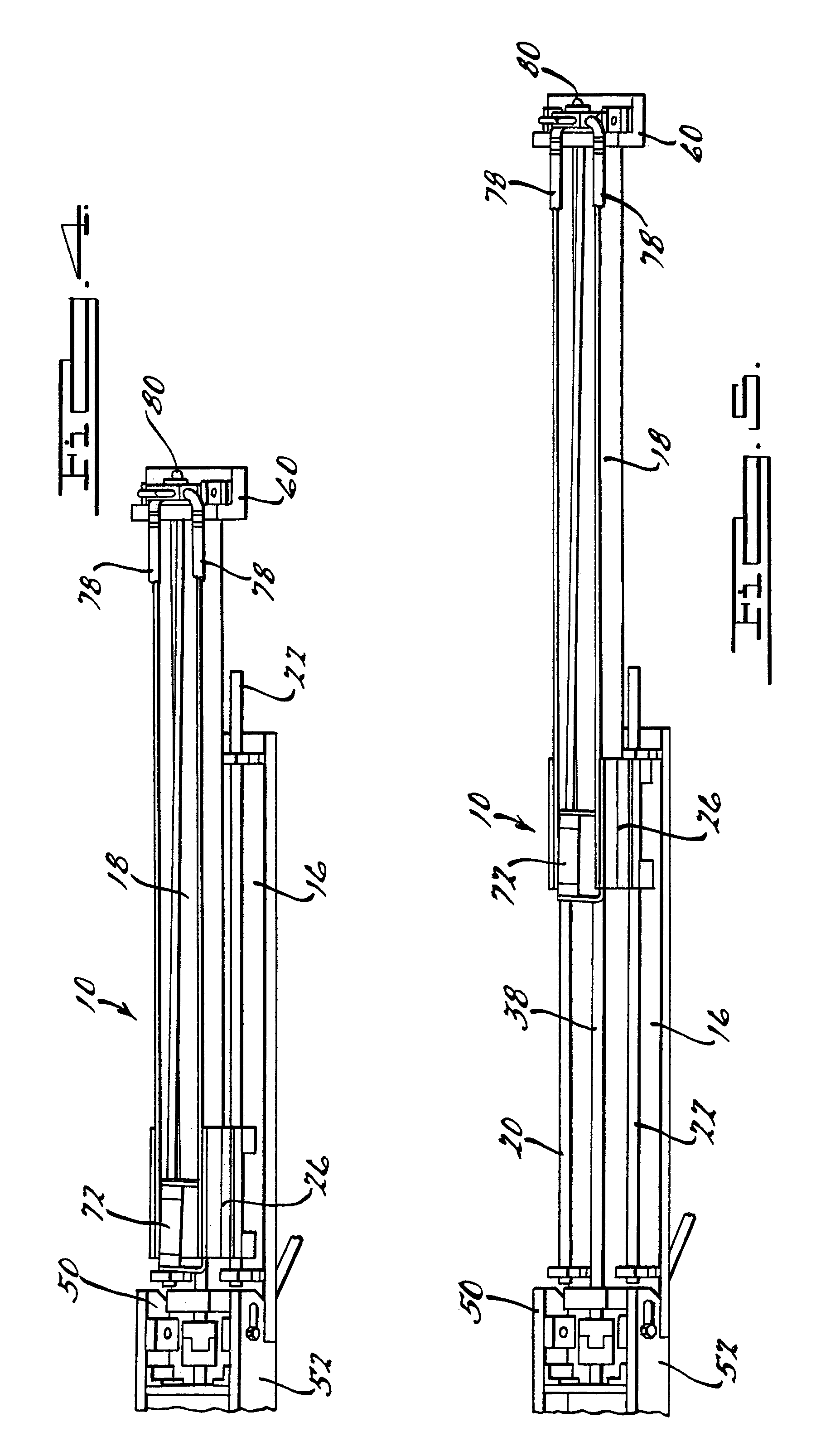Sprayed in place pipe lining apparatus and method thereof
a pipe lining and spraying technology, applied in the direction of spraying apparatus, pipe elements, coatings, etc., can solve the problems of inability to complete replacement of these pipelines, inability to spray in place, and corrosion of underground pipelines, so as to improve the spraying in place pipe lining apparatus, improve the effect of spraying in place pipe lining, and reduce the speed of spraying process
- Summary
- Abstract
- Description
- Claims
- Application Information
AI Technical Summary
Benefits of technology
Problems solved by technology
Method used
Image
Examples
Embodiment Construction
)
[0044]Referring to the drawings, a sprayed in place pipe liner apparatus 10 and method according to the present invention is shown. The sprayed in place pipe liner apparatus 10 is for use in any known new pipeline or any known pipeline in need of rehabilitation. The sprayed in place pipeline apparatus 10 is capable of being placed through existing man hole covers or placed through another cut in the pipe, such as but not limited to those man made through excavating or the like. The spray in place pipe liner apparatus 10 in one embodiment will be a robot that is capable of having a camera mounted thereon and is capable of being moved through a pipe 12 and will disperse a fast cured coating onto the interior of the pipe 12 being lined. It should be noted that the robotic apparatus 10 may not have a camera attached thereto. The robotic apparatus 10 will be moved through pipelines for rehabilitation on sliding rails 14 that have curved lead ends on one, neither or both ends thereof. Th...
PUM
| Property | Measurement | Unit |
|---|---|---|
| length | aaaaa | aaaaa |
| oblique angle | aaaaa | aaaaa |
| thick | aaaaa | aaaaa |
Abstract
Description
Claims
Application Information
 Login to View More
Login to View More - R&D
- Intellectual Property
- Life Sciences
- Materials
- Tech Scout
- Unparalleled Data Quality
- Higher Quality Content
- 60% Fewer Hallucinations
Browse by: Latest US Patents, China's latest patents, Technical Efficacy Thesaurus, Application Domain, Technology Topic, Popular Technical Reports.
© 2025 PatSnap. All rights reserved.Legal|Privacy policy|Modern Slavery Act Transparency Statement|Sitemap|About US| Contact US: help@patsnap.com



